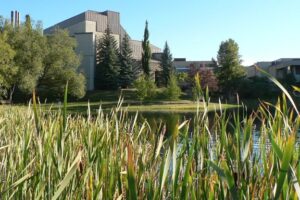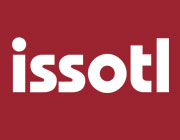Audience Matters
Dr Niall Majury, School of Natural and Built Environment, Queen’s University Belfast

“Whatever you say, say nothing” goes the title of a poem by Seamus Heaney (1975). For Heaney, like myself, awareness of audience mattered in negotiating the day-to-day in Belfast in the 1970s and 1980s. The sectarian nature of the conflict left people keenly aware of what to say and what not to say, where and when. Heaney’s poem reflected on a common strategy for survival, one that was felt necessary in a “land of password, handgrip, wink and nod, of open minds as open as a trap.” Audience mattered, even if we did not consciously engage with it.
Where I teach, at Queen’s University Belfast, most of our undergraduate students are local (i.e. from Northern Ireland). Thankfully, the times and places that structured their formative years are different to mine. With accommodation, understanding, and respect of “others” also come new found freedoms and greater opportunity near and far afield for our graduates. However, insights from exit surveys suggested students within the programme I teach struggled to secure graduate employment, more so than their counterparts at competitor institutions across the UK and Ireland. In following up with alumni about this, many reported feeling out of their depth in interviews and struggled to communicate what they had gained through their undergraduate education in terms that employers understood.
These war stories, shaped by encountering the less familiar upon graduation, impressed upon me the importance of incorporating audience and awareness of audience into the structure of our programme and assessment practices. By final year, typically, undergraduate students are well practiced and versed in crafting materials for an academic audience. As important as this is, it can render learners ill-prepared for negotiating the transition from higher education to a graduate career and as future leaders. This led me to begin experimenting with ways of embedding authentic scholarly learning experiences within course design and scaffolding them appropriately.
It has, to be honest, been a steep learning curve, both for me as an educator and the department in which I work. Yet the impact on student learning and outcomes after graduation has made it so worthwhile. Configuring these learning experiences around digital outputs, such as StoryMaps, has offered scope for students to work with audiences in a greater diversity of settings, honing their awareness of the significance of audience in the production of knowledge. By using assessment practices to step outside the classroom and into “the wild,” audience and awareness of audience afford students (and their academic mentors) opportunities to develop a greater understanding of self, other, and the significance of context in tackling the challenges that face society. It may, at times, feel like a walk on the wild side, but surely that is what we are preparing our students for.
To read the full TLI article, please visit here.
Image: Stepping out into the wild at White Park Bay, Northern Ireland
Reference: Heaney, S (1975) Whatever you say, say nothing, in North, London: Faber and Faber.




